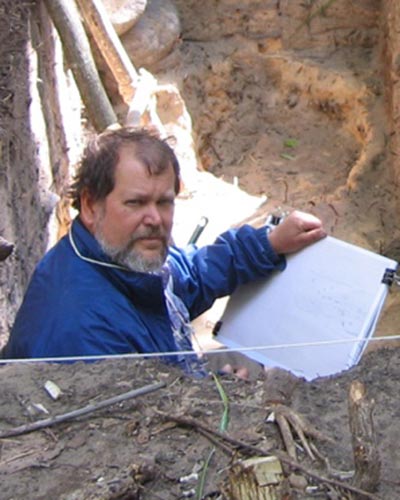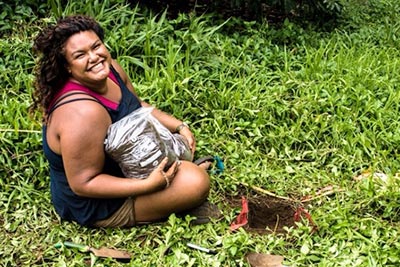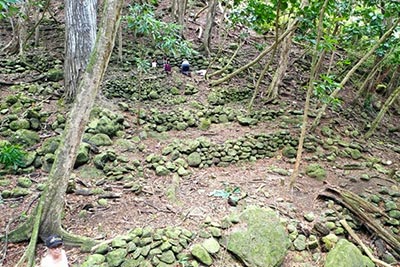What did you do last summer? If you ask Anthropology Professor Patrick V. Kirch, the answer is that he spent five weeks on Molokaʻi, but not on vacation.
Kirch and a team of academic researchers, University of Hawaiʻi at Mānoa graduate students and Molokaʻi community volunteers were on a mission – an archaeological mission. In July and August 2020, expedition into the island’s Hālawa Valley uncovered evidence that ancient Hawaiian farmers may have used sophisticated engineering techniques to grow taro perhaps as early as 800 years ago.
It’s the latest feather in the cap of internationally renowned researcher Kirch, a giant in the field of Polynesian archaeology who joined the College of Social Sciences in 2019.
“Some of the most interesting finds were made at two sets of stone-faced terraces that appear to have been irrigated from side-valley streams in Pualaulau and Kapana,” said Kirch. “These smaller field systems were not like typical lo‘i (taro patches) found on the main valley floor, but rather were constructed in and around boulder fields, a remarkable kind of engineering. What’s more, from our excavations it appears that the farmers who constructed these fields used a form of ‘hydraulic engineering’ to move sediments from the stream bed into the terraces, to build up soil that could then be planted in taro.”
The magnitude of that summer discovery was not lost on Anthropology graduate student Kylie Tuitavuki, who is benefiting from the amazing STEM training opportunity for Native Hawaiians and other underrepresented stakeholders in field settings. “I am a big proponent of community-based archaeology, and strongly believe that research should be done with and for the people,” said Tuitavuki. “The archaeology part was great, but the stories, histories and connections we made with community members was the best part of the field season. I was excited to be able to work in the region where my family is from.”
Archaeological survey and excavations took place in two of the valley’s ‘ili or traditional land sections, Pualaulau and Kapana. The mapping revealed extensive sets of ancient agricultural terraces along with house sites and several agricultural heiau. Test excavations in these features yielded charcoal samples that are now being analyzed and radiocarbon dated, and will provide a chronology for the development of the valley’s agricultural system. Other samples are being analyzed for microscopic pollen, plant silica “skeletons” and starch grains to determine what crops were being grown.
The initial survey of the valley’s soils is being analyzed in the laboratory of co-lead Noa Lincoln, an associate researcher in the UH College of Tropical Agriculture and Human Resources’ Department of Tropical Plant and Soil Sciences. Also on the research team is co-lead Dr. Jillian Swift of Bishop Museum and a UH faculty affiliate; and UH graduate students Tuitavuki, Dolly Autufuga and Kepa Lyman. Assisting were several members of the local community, including Greg Solatorio and Catherine Aki, and volunteers from the ‘Āina Momona 501(c) (3).
The research is funded by a National Science Foundation grant, “Collaborative Research: Soils, Nutrient Cycles and the Development of Sustainable Hawaiian Valley Agro-ecosystems.”
Kirch’s team continues research in Hālawa Valley in the coming year, with the goal of understanding how the ancient “hydraulic engineers” of Hawaiʻi created sustainable and highly productive agricultural systems that endured for centuries. Said Kirch, “Nothing could be more relevant now than learning – from the record of the past – how to rebuild sustainable agriculture in Hawaiʻi nei.”


